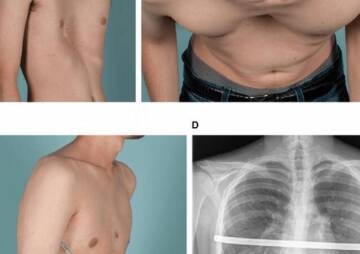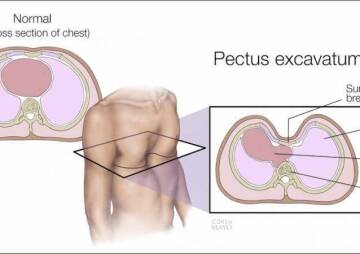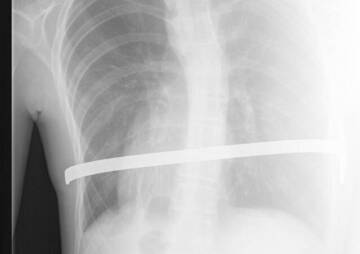-
Category
Craniomaxillofacial Surgery
Orthopedic Surgery
Spine Surgery
Orthopedic Implants
Hip Surgery
Knee Surgery
Pectus Excavatum
Bone Graft
Disinfectants
Healthcare
Are you worried about pectus excavatum pain and surgery?

There are two types of surgery to correct pectus excavatum, open surgery and closed (minimally invasive) surgery. Some individuals with this abnormality are worried about pectus excavatum surgery pain, but the question is, is it a painful surgery?
Pectus Excavatum is the most common type of congenital abnormality related to the chest wall. When the cartilages between the breastbone and the rib do not grow normally, it causes the sternal bone to grow inward. Pectus excavatum is also called funnel chest or sunken.
There are two types of surgery to correct pectus excavatum, open surgery and closed (minimally invasive) surgery. Some individuals with this abnormality are worried about pectus excavatum surgery pain, but the question is, is it a painful surgery?
How is pectus excavatum typically treated?
There are two different types of treatment, open surgery (Ravitch procedure) and minimally invasive treatment with a metal bar which is known as Nuss procedure.
Nuss procedure is totally appropriate for the majority of the patients with pectus excavatum and is also recommended by the best pectus excavatum surgeons.
Nuss procedure
The Nuss procedure is minimally invasive treatment because just a few small incisions and implanted steel bars are required. In this treatment an implanted steel bar makes the sternum move forward and keep it in a correct position. By two incisions on the sides of the chest bone, the curved steel bar is placed under the sternum.
Pectus excavatum surgery pain is probable through the Nuss procedure, because the sternum is forced outward and held under great pressure. In order to reform the chest properly the steel bar which was placed through the pectus excavatum implant must remain in place for about 2-4 years. As a result of remaining the implanted steel bar in place for at least two years, the material of the steel bar plays an important role in the post-operative recovery.
Health News Center is a well-established trading company which presents high quality orthopedic implants for the chest.
Is pectus excavatum surgery painful?
Like the majority of the surgery Pectus excavatum surgery pain is inevitable but there are some ways to manage the pain after the surgery.
One of the effective and common ways to manage pain is epidural catheter. Before the surgery an epidural catheter will be inserted to help control pain after the operation and it will stay in place for several days. Another way to reduce the pain after the operation is subcutaneous catheters. Other medications are also used to help manage pain so patients can be comfortable and functional after the operation. It is important for patients to comfortably take deep breaths, cough and walk after the operation.
Most of the patients will be discharged home within 4–7 days after the surgery.
Pectus excavatum surgery risks
However the Ravitch and the Nuss procedure are remarkably successful methods but like any other surgery they might include a slight amount of risk.
Possible risks from surgical repair of pectus excavatum include:
- Pneumothorax (air around the lung).
- Bleeding.
- Pleural effusion (fluid around the lung).
- Infection.
- Bar displacement.
- Pectus excavatum recurrence (comes back) after the bar is removed.
- Injury to surrounding structures.
Is pectus excavatum surgery worth it?
Both types of surgery methods include the Ravitch and Nuss procedures have perfect consequences, and patients are almost satisfied with the procedure.
Some patients with pectus abnormalities feel pressure and pain on their hearts and lungs and it impairs their functions. They cannot exercise properly because of their chest pain and some cases cannot breathe normally as well. The goal of pectus excavatum surgery for these types of patients is to relieve pressure on their lungs and heart and improve their exercise tolerance and normal breathing.
Aside from the cardiopulmonary function improvement, Pectus excavatum operation can improve the quality of life. In some patients the main issue is the abnormal appearance of the chest which causes them to lose their self confidence. After the success of the surgery patients will have better self-confidence and body feeling, they will be more sociable and they will show more interest in sports.
Related statistics and research show approximately 82% of satisfaction after surgery.


